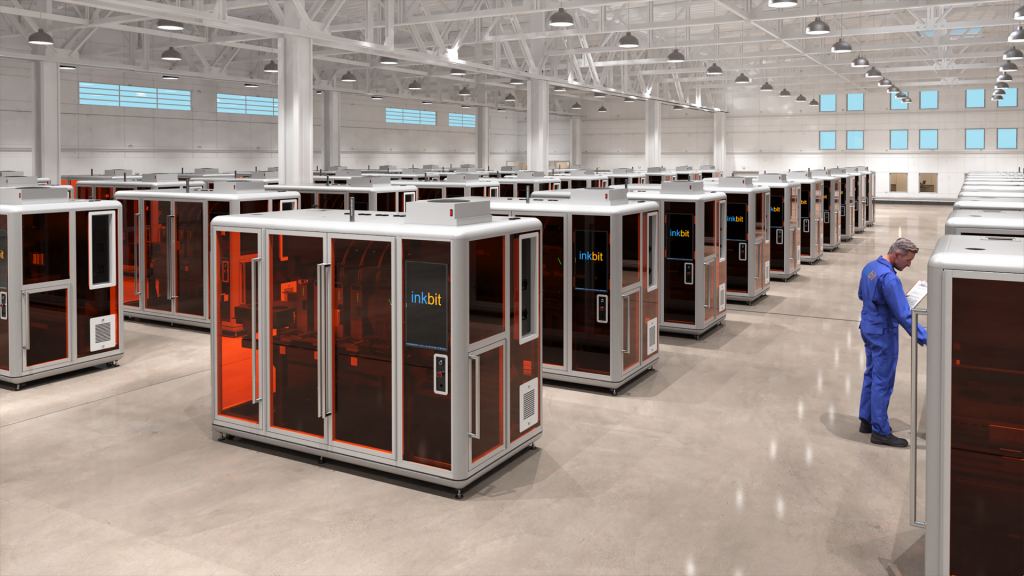Inkbit, a 2017 spin-out from MIT’s Computer Science and Artificial Intelligence Laboratory (CSAIL), has announced the launch of its first commercial 3D printer.
Dubbed Inkbit Vista, the multi-material jetting system operates on MIT’s proprietary Vision-Controlled Jetting technology, meaning it leverages 3D machine vision and AI for closed-loop control functionality. Built for the shop floor, Vista is aimed at manufacturers seeking both rapid prototyping and end-use production, with suitable applications in multi-material robotics, dental, automotive, and even product packaging.
Davide Marini, co-founder and CEO at Inkbit, states, “We are thrilled to launch Inkbit’s Additive Manufacturing System and offer a unique, rapidly deployable 3D printing solution to companies looking to adopt digital manufacturing.”

Vision-Controlled Jetting with Inkbit
The key to VCJ’s novelty lies in its vision-based feedback control system. The technology captures voxel-level 3D scan data of the print process on a rolling basis, enabling it to modify each layer as it is printed. As such, it provides users with real-time, in-situ control to ensure high performance components and reliability with series production. Developed at MIT’s CSAIL, the process is patent-protected and licensed exclusively to Inkbit.
Since its inception back in 2017, the company has raised approximately $15M in funding from various investors including Stratasys, DSM Venturing, Ocado, and 3M. Organizations such as DARPA and NSF have also provided significant funding for the development of the technology and subsequent applications in the medical sector.
As well as providing capital, some of Inkbit’s partners are also looking to implement VCJ into their own business operations. Tim Steiner, CEO and executive director of Ocado Group, explains, “Inkbit has built a proprietary 3D vision system. We’re working very closely with Inkbit on some of our own future developments where they’re enabling some really fantastic transformational advances.”

Inkbit Vista
Inkbit Vista is characterized by its large-format build volume measuring 500 x 250 x 200mm, and offers an impressive build rate of up to 2.75L per hour. The inkjet printheads are capable of printing parts accurate to tens of microns, and are based on a modular architecture that makes it easy to repair and upgrade components as and when needed.
Compatible with a whole host of jettable photopolymer inks, Vista enables any number of soft, rigid, tough, and chemically-resistant combinations in multi-material parts. The machine is fitted with four material slots (expandable to eight), whereby three are used for engineering materials and the fourth holds a non-hazardous meltable wax support material. Integratable with existing manufacturing systems, Vista features automated build plate loading and post-processing, reducing the cost-per-part with end-to-end automation.
Marini concludes, “Today, engineers are often using 3D printing technology to make prototypes, but limitations in materials and high costs make end-use product production difficult. At Inkbit, we’re on a mission to disrupt that notion and create a technology that provides fast printing capabilities with unmatched design freedom and reliability for even the most demanding applications and environments.”

Technical specifications and pricing
Below are the technical specifications for Inkbit Vista. The system is available to pre-order now. Readers interested in purchasing the machine should visit the Inkbit website for a quote.
| Print engine | Vision-Controlled Jetting |
| Build volume | 500 x 250 x 200mm |
| Resolution | 32 x 63.5 x 18 microns (adaptive) |
| Vertical build rate | Up to 15mm/hour |
| Vision system resolution | 32 x 32 x 20 microns |
| Materials | 4 |
| Dimensions | 2.8 x 1.5 x 2.4m |
| Weight | 2200kg |
Subscribe to the 3D Printing Industry newsletter for the latest news in additive manufacturing. You can also stay connected by following us on Twitter and liking us on Facebook.
Looking for a career in additive manufacturing? Visit 3D Printing Jobs for a selection of roles in the industry.
Featured image shows the Inkbit Vista 3D printer. Photo via Inkbit.



